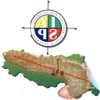Morphological Features of Pancreatic Stump, Other than Wirsung Diameter and Pancreatic Texture, Influence Pancreatic Fistula Rate After Pancreaticoduodenectomy
Abstract
Context Pancreaticoduodenectomy (PD) is still characterized by high morbidity rates even in high volume centers, mainly represented by postoperative pancreatic fistula (POPF) and its associated further consequences. Wirsung diameter and pancreatic texture are well known features related to increased POPF risk. However, limited information about the relationship between morphological features of pancreatic stump and POPF onset is available. Objective Aim of the study was to evaluate the relationship between pancreatic stump morphology, intra-operatively assessed, and the occurrence of POPF in patients undergoing PD in an high volume center. Methods Between January 2010 and June 2012 we performed 136 PDs for benign and malignant disease; in a subgroup composed by 72 cases we realized a prospective study recording intra-operative measurements of the remnant pancreatic stump, recording surgeon’s judgment about pancreatic texture, and highlighting the caliber of main pancreatic duct, its position and the whole area. Between March 2011 and June 2012, in a consecutive series of 72 PD, we prospectively recorded the following characteristics of the pancreatic stump: surgeon’s judgment about pancreatic texture, diameter of main pancreatic duct, the whole area of pancreatic section (approximately calculated as elliptic), the distance between Wirsung duct and cranio-caudal and antero-posterior margins. In all patients, post-operative complications were recorded. Results Pancreatic fistula occurred in 19 cases (23.8%), 10 of them clinically significant (grade B and C according to ISGPF classification). In univariate analysis, mean Wirsung diameter resulted significantly smaller in patients with POPF (3.18 vs. 4.48 mm; P=0.007) and in patients with clinically significant POPF (P=0.015); searching for a cut off value, Wirsung diameter smaller than 4 mm demonstrated an association with higher POPF incidence (37.5% vs. 4.35%; P=0.003). Similarly, soft pancreas texture resulted associated with an increasing POPF rate (75% vs. 7%; P<0.001). Analyzing pancreatic stump morphology, we observed a relationship between larger stump areas and POFP development (206 mm2 in POPF cases vs. 131 mm2 in patients without fistula; P=0.017); moreover, main pancreatic duct decentralization appeared significantly associated with a lower POPF risk (more evident on antero-posterior axis than on cranio-caudal; P=0.019 and P=0.144, respectively). In multivariate analysis, only pancreatic stump soft texture and Wirsung diameter smaller than 4 mm were associated with POPF. Conclusion This study confirms small Wirsung diameter and soft pancreatic texture as the main determinants for POPF development. Moreover, an higher risk of failure of pancreatic anastomosis is also observed in large pancreatic stumps and when main pancreatic duct is centrally located.
Downloads
Copyright (c) 2014 Cristina Ridolfi, Francesca Gavazzi, Maria Rachele Angiolini, Marco Madonini, Barbara Fiore, Marco Montorsi, Alessandro Zerbi

This work is licensed under a Creative Commons Attribution 4.0 International License.
As a member of Publisher International Linking Association, PILA, iMedPub Group’s JOP follows the Creative Commons Attribution License and Scholars Open Access publishing policies. Journal of the Pancreas is the Council Contributor Member of Council of Science Editors (CSE) and following the CSE slogan Education, Ethics, and Evidence for Editors.
